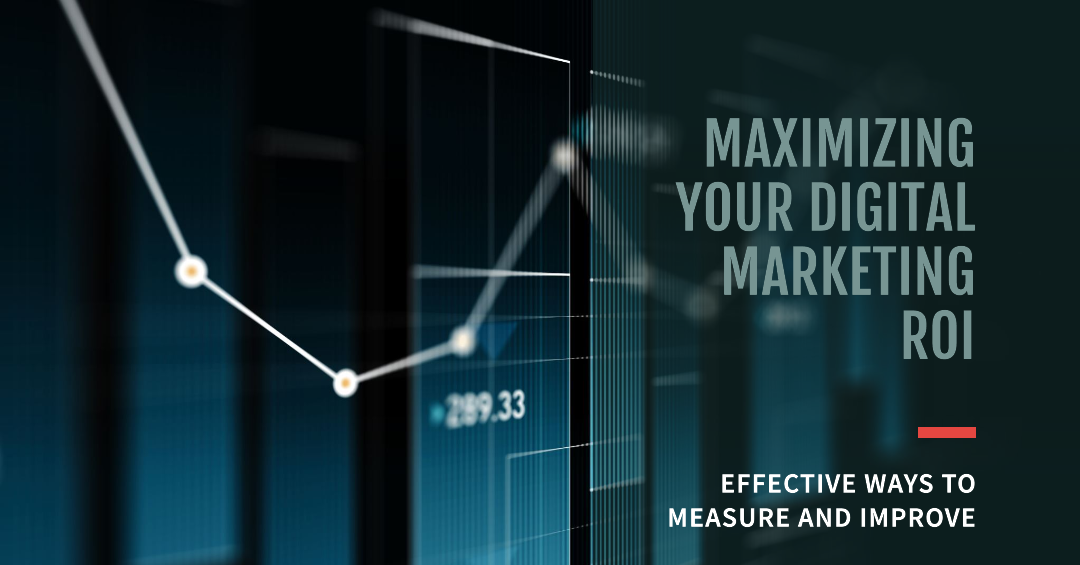In today’s digital landscape, understanding and enhancing your digital marketing ROI is critical for the success of any marketing strategy. This article explores effective methods to measure and improve your ROI, ensuring your marketing efforts are both efficient and impactful.
Introduction
Digital marketing ROI (Return on Investment) is a crucial metric for businesses looking to maximize their marketing efforts. It measures the effectiveness of your marketing campaigns in generating revenue compared to the costs incurred. In an era where every marketing dollar counts, knowing how to accurately measure and enhance your ROI can set your business apart from the competition.
What is Digital Marketing ROI?
Digital marketing ROI is the ratio of net profit to the total cost of your digital marketing investment. It helps you understand which marketing activities are driving the most value for your business and which ones need optimization. Calculating ROI involves comparing the revenue generated from your marketing campaigns to the costs associated with them, including ad spend, tools, and personnel.
Why is Measuring Digital Marketing ROI Important?
Measuring your digital marketing ROI is essential because it:
- Validates Your Investment: Demonstrates the value of your marketing spend to stakeholders.
- Guides Budget Allocation: Helps allocate budget to the most effective channels and campaigns.
- Optimizes Campaigns: Identifies underperforming areas that need improvement.
- Supports Decision Making: Provides data-driven insights for strategic decisions.
Methods to Measure Digital Marketing ROI
1. Set Clear Goals and KPIs
Before diving into ROI calculations, establish clear marketing goals and key performance indicators (KPIs). These might include metrics such as conversion rates, click-through rates (CTR), customer acquisition costs (CAC), and lifetime value (LTV).
2. Use Web Analytics Tools
Tools like Google Analytics are essential for tracking and analyzing your website traffic and user behavior. They provide insights into which campaigns are driving traffic, conversions, and sales, allowing you to measure the ROI accurately.
3. Attribution Models
Attribution models help you understand how different marketing channels contribute to conversions. Common models include:
- First-Touch Attribution: Credits the first interaction for the conversion.
- Last-Touch Attribution: Credits the last interaction before the conversion.
- Multi-Touch Attribution: Distributes credit across all touchpoints in the customer journey.
4. Advanced Analytics
Leverage advanced analytics tools like HubSpot, SEMrush, and Adobe Analytics to gain deeper insights into your marketing performance. These platforms offer comprehensive dashboards and reporting features that help track ROI across multiple channels.
5. Customer Relationship Management (CRM) Systems
Integrating your CRM with your marketing tools can provide a holistic view of your customer journey. It helps track leads from initial contact through to conversion, giving a clearer picture of your marketing ROI.
Techniques to Improve Digital Marketing ROI
1. Optimize Your Marketing Funnel
A well-optimized marketing funnel ensures that potential customers smoothly transition from awareness to purchase. Focus on:
- Top of the Funnel (TOFU): Create engaging content to attract visitors.
- Middle of the Funnel (MOFU): Nurture leads with informative content.
- Bottom of the Funnel (BOFU): Convert leads with persuasive offers.
2. A/B Testing
Conduct A/B tests to compare different versions of your marketing materials. This helps identify the most effective strategies for email campaigns, landing pages, and ad creatives, ultimately improving your ROI.
3. Personalization
Personalize your marketing efforts to cater to individual customer needs and preferences. Use data-driven insights to deliver personalized content, emails, and offers, enhancing customer engagement and conversion rates.
4. Content Marketing
High-quality content is vital for attracting and retaining customers. Invest in creating valuable, relevant, and consistent content that resonates with your target audience. This boosts organic traffic and leads to higher ROI.
5. Automation
Marketing automation tools streamline repetitive tasks, such as email marketing, social media posting, and lead nurturing. This increases efficiency, reduces costs, and improves ROI by ensuring timely and relevant interactions with your audience.
Check out for Google Ads Budgeting Strategies
Case Study: Successful Digital Marketing ROI Improvement
Let’s look at a real-world example of a company that successfully improved its ROI.
Company: XYZ Corp
Challenge: XYZ Corp struggled with low ROI from its digital marketing campaigns, primarily due to inefficient budget allocation and lack of personalization.
Solution:
- Goal Setting: XYZ Corp set clear goals and KPIs for their marketing campaigns.
- Attribution Models: They implemented multi-touch attribution to understand the customer journey better.
- Personalization: Leveraged customer data to deliver personalized content and offers.
- A/B Testing: Conducted extensive A/B testing to optimize email campaigns and landing pages.
- Content Marketing: Invested in high-quality content creation and distribution.
Result: Within six months, XYZ Corp saw a 40% increase in conversions and a 25% reduction in customer acquisition costs, leading to a significant improvement in their ROI.
Common Questions About Digital Marketing ROI
1. How often should I measure my ROI?
It’s recommended to measure your ROI on a monthly basis to track progress and make timely adjustments to your strategies.
2. What is a good ROI for digital marketing?
A good ROI for digital marketing varies by industry, but a general benchmark is a 5:1 revenue-to-cost ratio. However, some high-performing campaigns can achieve a 10:1 ratio or higher.
3. How can I improve my digital marketing ROI with a limited budget?
Focus on cost-effective strategies such as SEO, content marketing, and social media. Prioritize high-impact, low-cost tactics like email marketing and leverage free tools like Google Analytics for performance tracking.
Conclusion
Measuring and improving your digital marketing ROI is an ongoing process that requires a strategic approach and the right tools. By setting clear goals, using advanced analytics, and optimizing your marketing efforts, you can maximize your ROI and ensure your digital marketing strategies are effective and efficient. Stay informed about the latest trends and continuously refine your tactics to stay ahead in the competitive digital landscape.








